Five June wildflowers to spot at the Falls of Clyde
June brings out the early summer wildflowers at the Falls of Clyde. Here are five to spot on your next visit to the reserve.
* * * *
After the cold spring, we’ve had a good run of weather lately. The woodland canopy has filled out and the shoulders of the gorge are thickly cloaked in different shades of green. Beneath the trees, the ground is becoming cooler and shadier, and the early spring wildflowers are gradually being swallowed up by tall ferns and grasses.
At this time of year, it is in the open spaces – the meadows, glades and roadside verges – that we start to see pollinators congregating. At the reserve, the horses that graze our meadow throughout the year have done their job of keeping the coarse grasses down and have now been moved off to allow the summer wildflowers to grow and set seed. This is a sight to look forward to in the coming couple of months.
For now though, there are still jewels to be found elsewhere – by the riverbank and the woodland margins. Here are five flowers to look out for on your next visit to the Falls of Clyde.
Wood cranesbill (Geranium sylvaticum)
While you may well be familiar with the showier geraniums commonly cultivated to bring colour to your garden, their wild relatives have a more subtle charm. Like the speedwells, there are many geranium species, and you can also see meadow cranesbill on the reserve. Wood cranesbill flowers have a whiter centre and can vary in colour depending on the soil the plant is growing in, from purple to light blue.
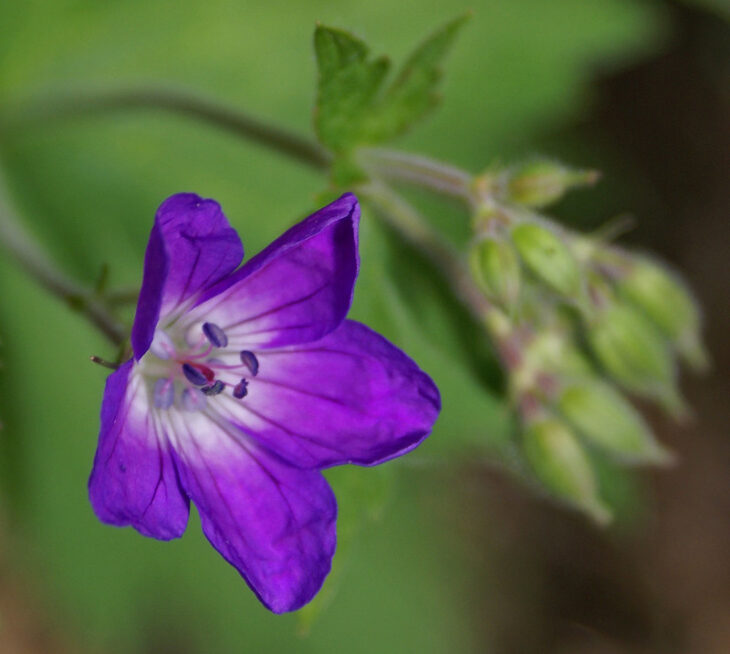
Wood avens (Geum urbanum)
Earlier in the year we enjoyed the dark red stems and peach-coloured flowers of the water avens, some of which can still be seen along the boardwalk. Now however, its relative the wood avens is coming into bloom. Its yellow flower can be seen throughout the wooded parts of the reserve, but these are also plants that readily hybridise, so look out for examples that don’t seem totally sure which avens they are!
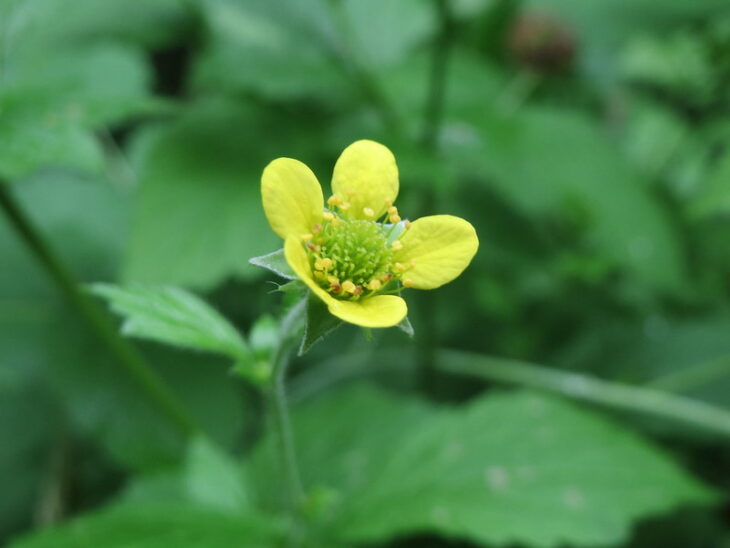
Wood speedwell (Veronica montana)
Various species of this pretty blue-violet wildflower can be found in the UK – and at the Falls of Clyde alone you may encounter two or three. Wood speedwell is one of the less common, but its sprawling clumps studded with pale lilac flowers can be seen right now forming beautiful borders to some of the woodland trails.
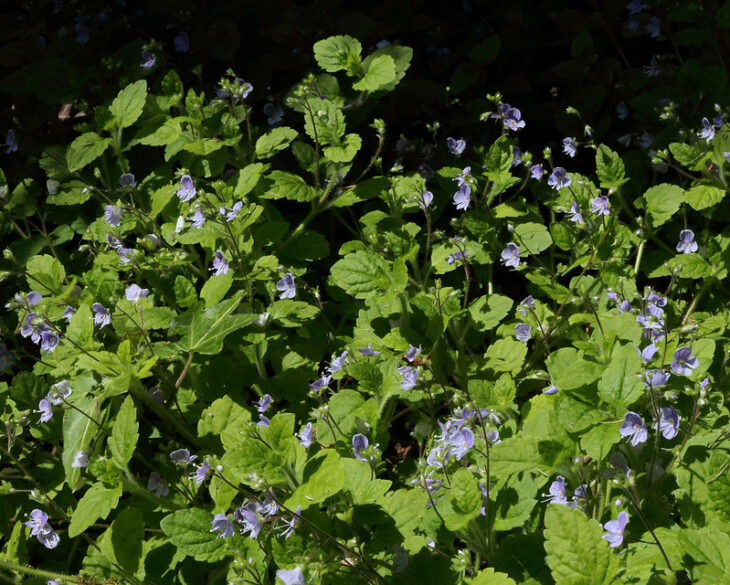
Common cow-wheat (Melampyrum pratense)
Cow-wheat isn’t a flashy plant, but it is a very interesting one. For a start, it is semi-parasitic: it attaches to the roots of other plants and obtains some of its nutrients through this route. When it comes to dispersing its seeds however, it has another clever tactic. They secrete a sugary substance that attracts wood ants, and their seed pod is fleshy, resembling the ants’ cocoons. The ants then take the seeds back to their underground nests, where the conditions are just right for them to germinate and grow into new plants. Like many other flowers, it likes the woodland edges where more light can reach it, and you can see the best examples on the stretch of trail leading up to Bonnington Linn.
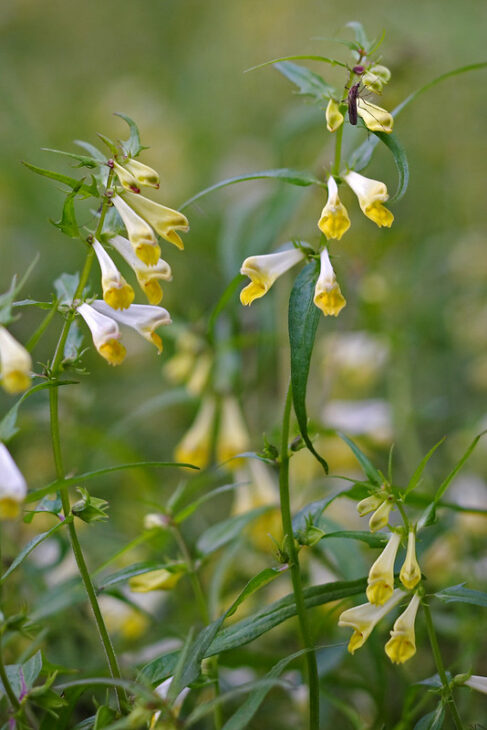
Tufted vetch (Vicia cracca)
Tufted vetch is a member of the pea family, and grows in a similar way, sending out tendrils from the tips of its leaves. When they bump into something, such as another plant, the tendrils wrap around it and attach themselves securely. As a result, you often see vetch in a tangled mass with other grasses and plants. Roadside verges or hedgerows are prime habitat. Keep an eye out for its purple flowers clustered to one side of the stem, and see if you can see any bumblebees feeding on them.
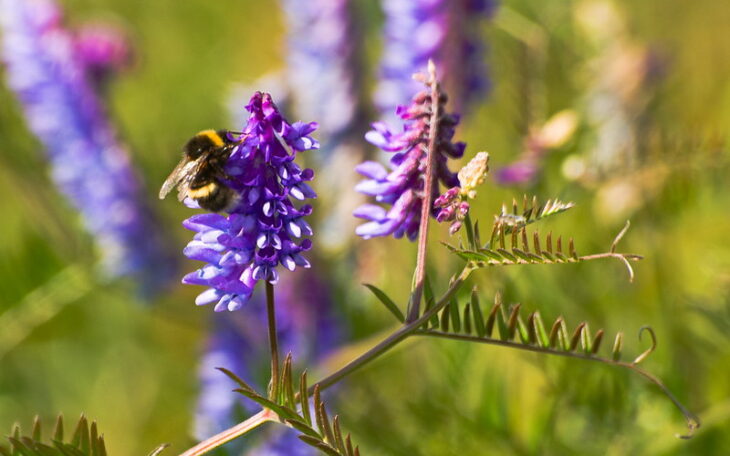
Once you’ve got these ones down, don’t stop there – there are plenty more currently in bloom to keep your eyes peeled for: herb-robert, yellow pimpernel, stitchwort, broom and, of course, buttercups, which have turned our meadow into a sea of yellow. Check back in July to see what other species rise above the golden waves.
Patrick Endall, Falls of Clyde Seasonal Ranger
Help protect Scotland’s wildlife
Our work to save Scotland’s wildlife is made possible thanks to the generosity of our members and supporters.
Join today from just £3 a month to help protect the species you love.
Preface
June brings out the early summer wildflowers at the Falls of Clyde. Here are five to spot on your next visit to the reserve. * * * * After the …
